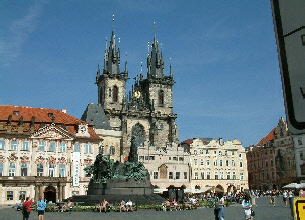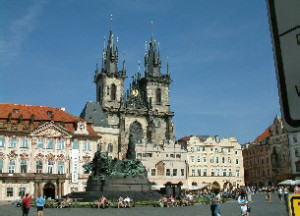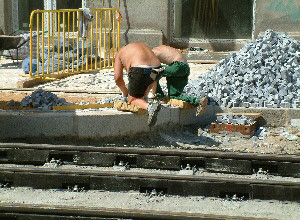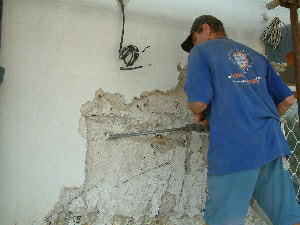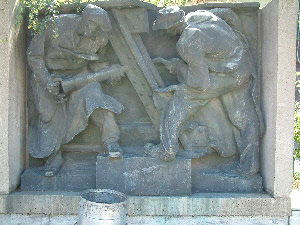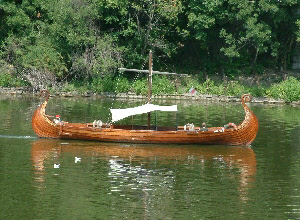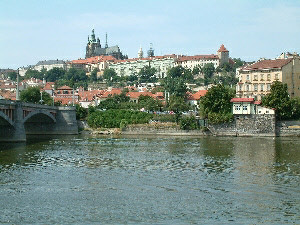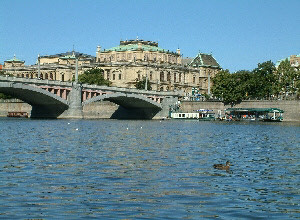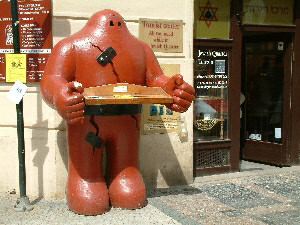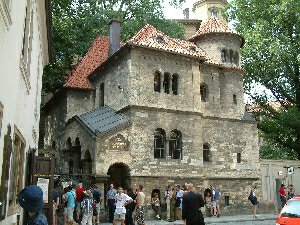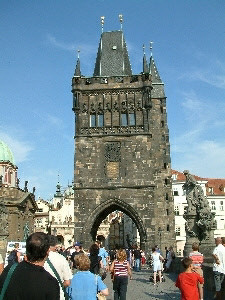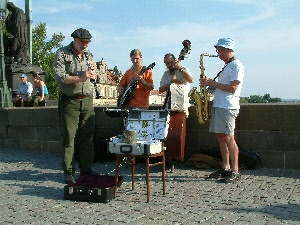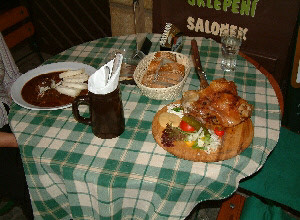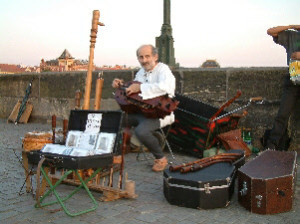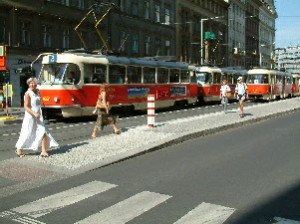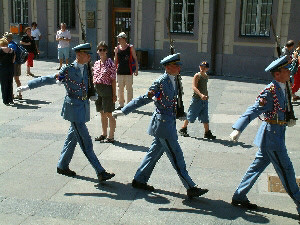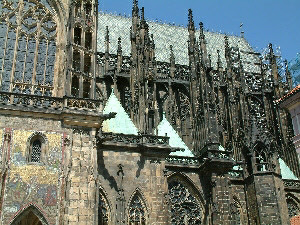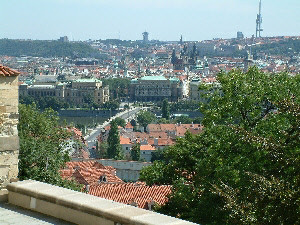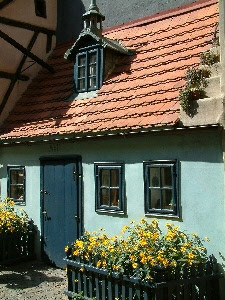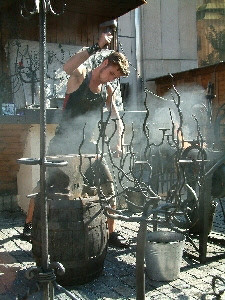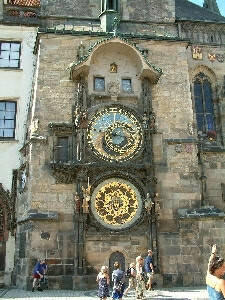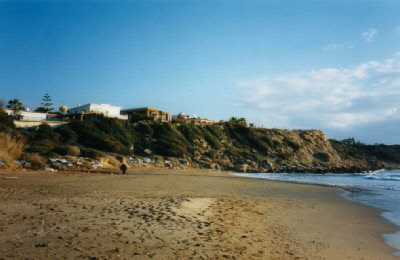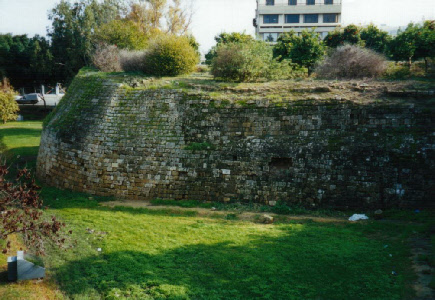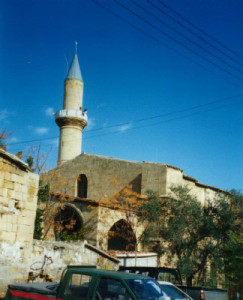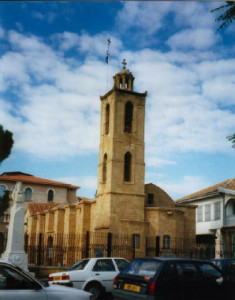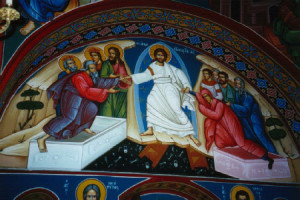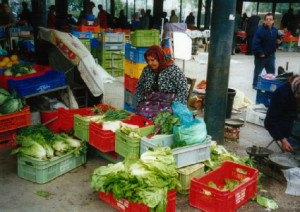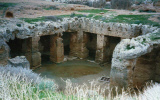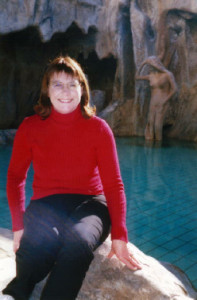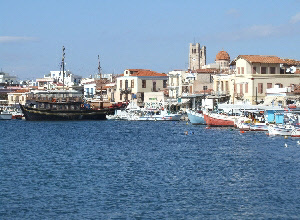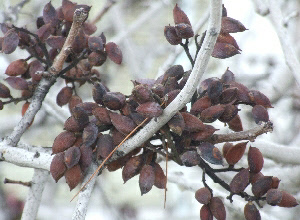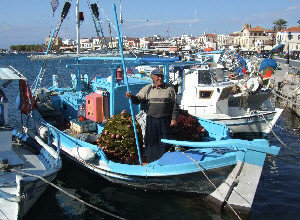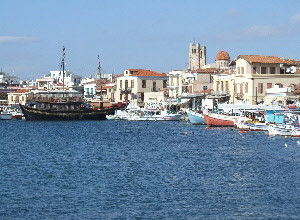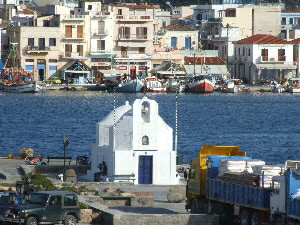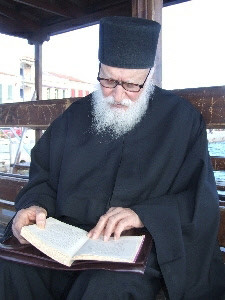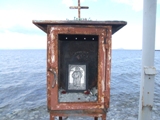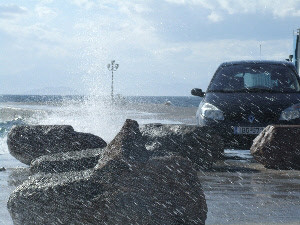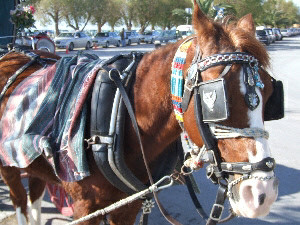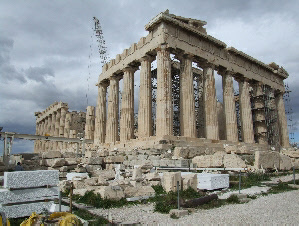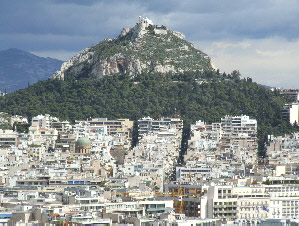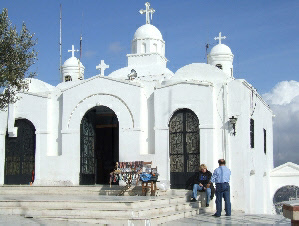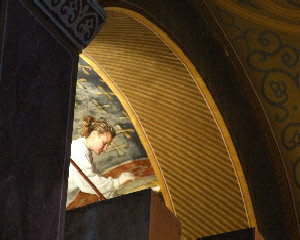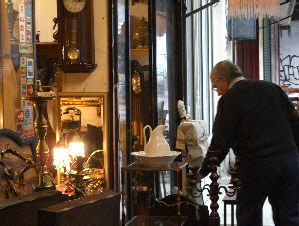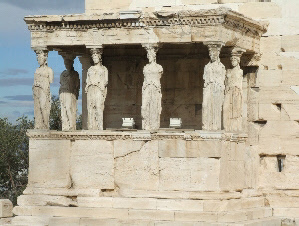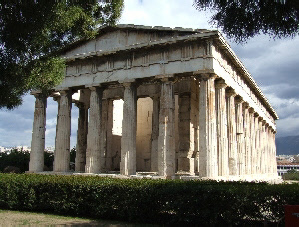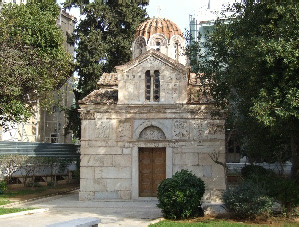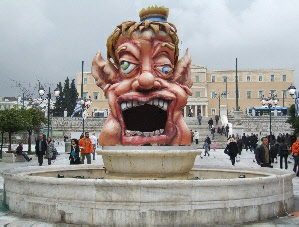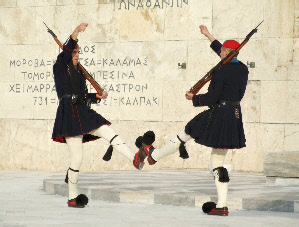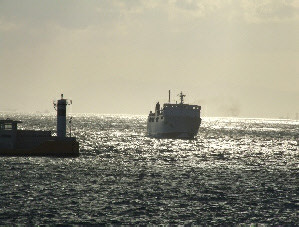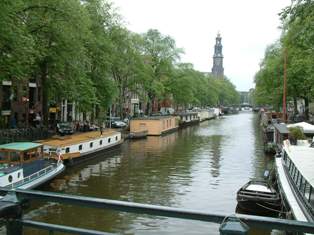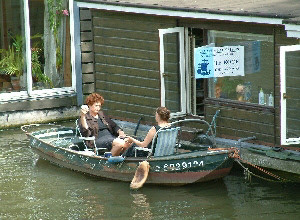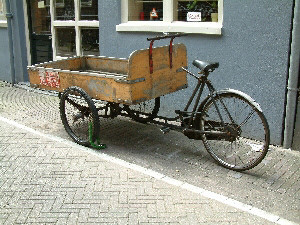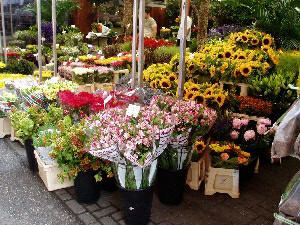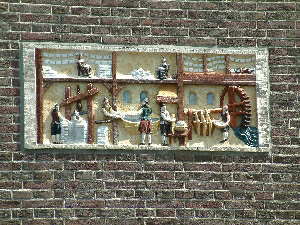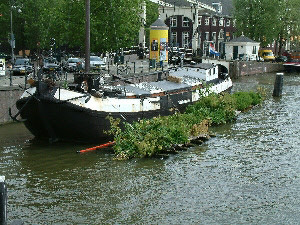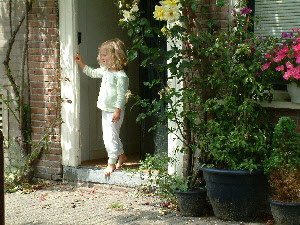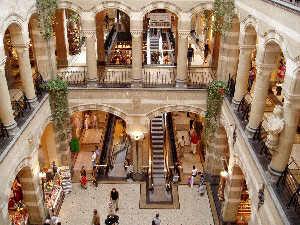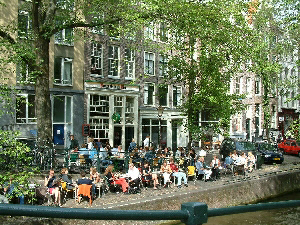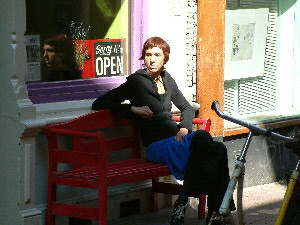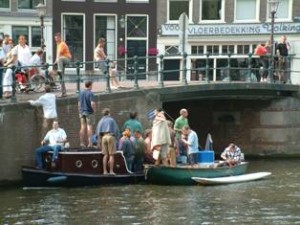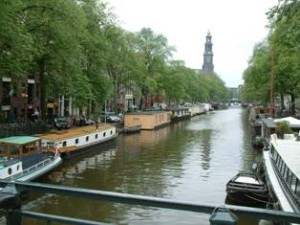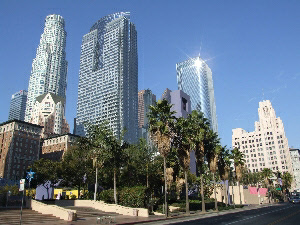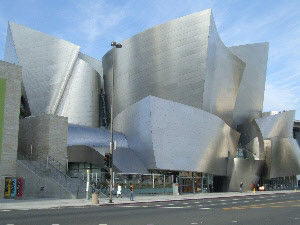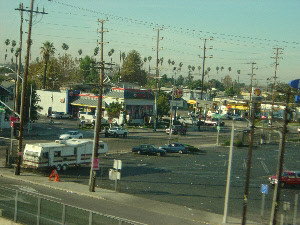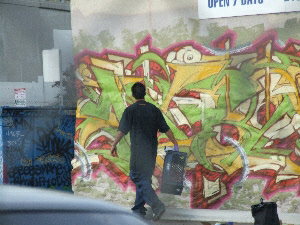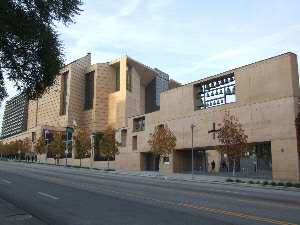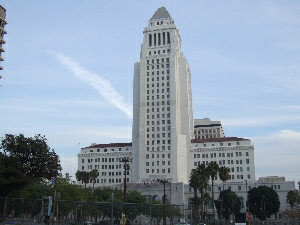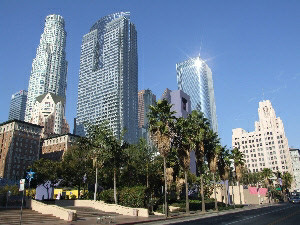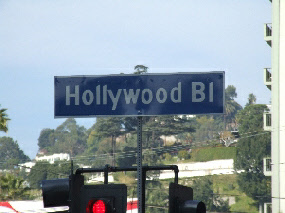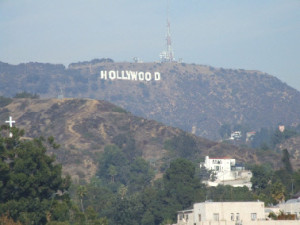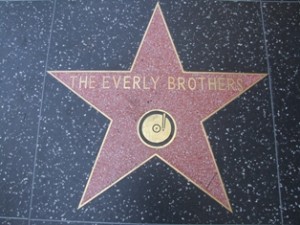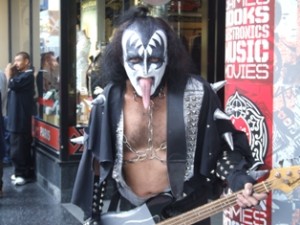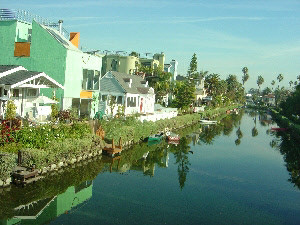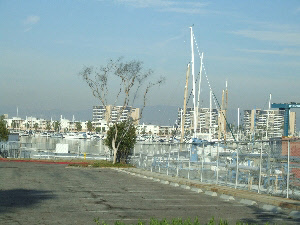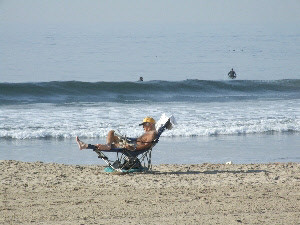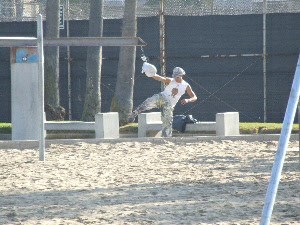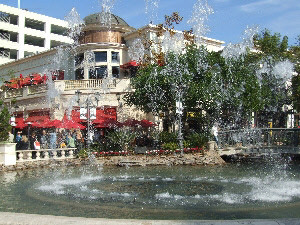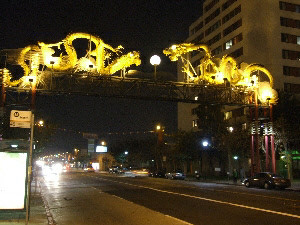16 Sep 2001
That was a long hard week … For a couple of days the week before, I was asked to do some overtime on the COMP helpdesk and then late on that Friday the team leader asked me to let her know if I wanted any more overtime. I told her I didn’t ask for the overtime in the first place, I was just doing her a favour, but if at any time she wanted me to work the extra 2.5 hours from 4:30 to 7:00pm, all she had to do was ask. She said, “Stay on then, we always need extra help.” So now I’m on overtime for the rest of my Sainsbury’s contract, about 10 paid hours per day.
It suits me ok because it costs me 200 pounds a month for the train trip to Blackfriars, so if there’s an hour or so going I may as well take it because I have already paid to be there. I get paid by the hour, so if my train is late, I don’t get paid for the time I wasn’t there, nor do I get paid on Bank Holidays. It’s very good for people who are permanent because they get paid whatever happens so if there’s a holiday or their train is late, or their hours are reduced – like at the moment we’re on a 37 hour week – they still get paid their usual amount and the less they have to be at work, the better they like it. Me, I struggle for every hour so if there are extra hours going begging, I take them. There are things I won’t do, though. One of the team leaders asked me if I’d work the weekend so I said, “How much do you pay?” and when she told me, “Time only,” I turned her down. I don’t give up my weekends unless it’s time and a half on Saturday and double time on Sunday.
So this last week has been filled with getting up at 6:00, catching the 7:31am Bedford – Brighton train to Blackfriars, logging in at about 8:20, having lunch from 1:00 to 1:45, finishing on my SHD helpdesk at 4:30, logging into the COMP helpdesk and working until 7:00pm, catching the 7:22 train back to St Albans and getting home just after 8:00pm. Elaine’s really good because she takes me to the station every morning and brings me back very night. I have learnt a few new skills, too, because the COMP helpdesk looks after stores while my own SHD helpdesk looks after office workers with Windows 95 and Microsoft Office. The COMP Helpdesk manages Unix servers and the Mainframe which capture, process and print the data generated by stores orders and sales. By stores, we mean gigantic supermarkets and there are about 1500 of them, so you can appreciate that there is quite a bit of data …
I also had a chat to the team leader about extending my contract because I need to know very soon if I have to find another job. The contract was to run out on the 21st of September and they wrote me to say they’d extended it for a week until the end of September. Last week the floor manager, Kevin Moody, said he’d be extending it to the end of October. I asked him later in the week if I could contact my agency to make my extension official and he said it was already in hand and that he’d extended my contract for “A little longer than that.” I’m not sure how much further that is but every week is a bonus.
On Tuesday 11th someone said that he’d been told on the phone that a plane had flown into the World Trade Centre in New York. We couldn’t believe it and we were even more incredulous when someone yelled out a little later that a second plane had flown into the second tower. “Ahh, you’re taking the mickey!”
“N0, no, it’s on TV – there are holes through both towers.” Then we heard about the Pentagon and finally the plane that went down near Pennsylvania. At about 3:00pm London City shut shop and went home and Canary Wharf was evacuated and cordoned off. When I caught my train at 7:22pm there were only about 30 of us who waited for it when usually there are about 200 on the platform. A lot of the Deutsche Bank people I worked with in Bishopsgate in 1999 were often speaking to colleagues in the World Trade Centre and I know there will be lots people there waiting desperately for news. It’s been a terrible story. I have heard that about 150 NZ’ers are missing and up to 500 Britons. Mostly, though, we are keenly aware of the loss of intelligent, educated, gifted, enthusiastic young lives hopelessly and tragically wasted.
We have just come back from St Albans Cathedral. There is an area right under the central tower which is dedicated to people who are being persecuted and it is there that a small display with pictures and candles was set up by a local lady with ties to New York. When Genevieve was in Italy she came across a small stone church in a country vineyard and was so moved, she lit a candle for Jason. We thought it was such a lovely gesture that we have done so, too, in the churches we have visited and we light a candle for Jase each time we go to the St Albans Cathedral.
Today we lit two – one for Jase and one for the victims of this terrible tragedy. There is, remarkably, a St Albans Cathedral in Washington. We wrote a little message for them, although there was no book of remembrance. We mentioned this to one of the churchwardens, but he said The Powers That Be had decided there wouldn’t be a book. He was obviously quite disappointed at the decision. We told him we thought it would have been nice to have a book and send it to Washington, and he looked quite distressed.
We are, however, quite worried about what happens next. Everyone is talking war, but the last time there was a big bombing in the US blamed on foreign terrorists – in Oklahoma – it was an American who did it. We are hoping that the Americans don’t just shoot first and ask questions later in their desire to punish those who harbour terrorists, regardless of whether those were the terrorists who attacked the World Trade Centre. Tony Blair looks like he’s trying to talk sense and so is Imran Khan. Cool heads are hard to find.
The Americans haven’t been too successful in stopping drugs getting into their country from areas really close to them and they pour vast amounts of money into the IRA and the Israelis. Bin Laden used to be a US ally, the Taliban government in Afghanistan was backed by the Americans to fight the Russians and Sadam Hussein in Iraq was originally an American puppet to overthrow the government there. We are just wondering if the Americans are going to use the WTC attack to settle a few scores. The world has to be really careful that the aftermath of the tragedy doesn’t kill more people than the tragedy itself!
On the morning after the attack on the WTC as I was crossing Blackfriars Bridge on my way to work I heard a young English girl’s voice so clearly in my head I could have been already logged into the phones. “My Windows won’t start. I have been here since 7:30 this morning trying to get it to go and I can’t do my work.” She was on the verge of tears and those last few words in her beautiful crisp, clear and despairing tone – “I can’t do my work” rang in my ears and haunted me all day long. I don’t remember if I worked with her in Tesco or in Sainsbury’s but I helped her to get her program running and she nearly cried with relief. I was probably reacting to the tragedy of the day before, but I am so pleased that I helped her because she is the very embodiment of all that young people do well, like Joni. She is hard working, enthusiastic, dedicated and professional.
We on the helpdesk do good work, you know, to keep these young people doing what they want to do. I always thought that being a teacher was altruistic and steeped in the romantic traditions of liberalism and humanism, but since being in business and working in IT, I see it still applies to me. I have done more good work since I started in IT and became a businessman than I have achieved doing anything else in my life. I am not just a cog in the great machine: I help others to do the work they want to do. Later the same day a man rang me to get his program working again because its central data file had become unreadable. I fixed the file and as he ran his program he said, “How did you do that? Ewart, that was excellent work, thank you very much.”
I have one other piece of sad news; Ivor has been diagnosed with a tumour near his stomach and it is so bad that he can’t eat anything unless Iris blends it all up and he eats it as a sort of puree. They think it’s operable because he hasn’t had it very long – under a year – and he goes for a full scan on Tuesday. I am very worried by the news. Ivor is the most special friend – he is very knowledgeable about the Adams family that my grandmother Sadie belonged to, he is a kindly, gentle and generous man and most of all he is the man who made my dream come true. We have been able to stay here because of the help and the generosity that he and Iris gave us when we were new to England and the British ways of doing things. Without their help at that time we could not have stayed. I am so hoping that he will be ok.
On a much more pleasant note, we have had a few of our own adventures. I learnt a couple of things. We went to Ivinghoe Church. You know the rhyme?
Wing, Tring and Ivinghoe, three little churches all in a row
They are not in a straight row … In Ivinghoe Church is a list of all the vicars since the Normans. One of those vicars was the Bishop of Westminster – for about 300 years. Ivinghoe was the wealthiest living in Buckinghamshire and of course the Bishop of Westminster would have it – it’s the wealthy who always get first crack at the riches. It’s likely he never actually went there, let alone preached there. The Duke of Westminster is the wealthiest man in Britain, worth about 10bn pounds, mostly in central London property.
Last Bank Holiday weekend we went to the Ford End Mill in Ivinghoe. There is no Ivinghoe mill listed in the Domesday book but one is recorded in 1232 and Ford End Mill thinks it might be them. The Normans built a grand house nearby with a moat around it and the moat is used to pond water for the mill. The stream is very small so the mill could not work all day, every day and while the water wheel itself is a Victorian overshot steel wheel with big riveted plates and an axle that runs in heavily greased wooden bearings, the building is dated in the middle 1740’s.
When the mill is working the whole building sways. It processed 2 tons of corn, wheat or barley per week. I saw a calculation that started with 16 sacks of grain and although different grain weighs different amounts, it was always processed and paid for by the sackful – per bushel. So the rough calculation put production at around 2 tons a week. This particular mill, and the ones near us at Kingsbury and Redbournebury, produce wholemeal flour. Elaine bought a pound of flour and she made the most beautiful scones, which we shared with Karen upstairs and Christine next door. It was quite a nice little party and they were most impressed at Elaine’s cooking.
There are two grinding wheels; the one on top, which goes round and round and thus is called the runner stone is a sandstone wheel made from a Peak District stone aptly called millstone grit. The bottom wheel, the bed stone, is fixed and is made from lots of smaller pieces of French marble called burr stone cut to a special pattern and tied into the shape of a wheel with an iron hoop such as you see on wagon wheels. There is also a series of grooves cut deeply into the bed stone which both grind the grain and channel it into the central hole.
The bed stone was designed by the Romans and that design has not changed in 2000 years. There’s nothing overwhelmingly traditional in that; no-one has ever designed a better one. One other thing I found out about flour mills: they have been in Britain since Saxon times and until very recently they only ever ran in daylight hours. One is not allowed within coo-ee of them with a candle or any other naked flame because the dust they produce is extremely explosive.
We bought three most interesting horse brasses, one with the Bedfordshire coat of arms, one with the Buckinghamshire coat of arms and one with an illustration of the Ford End Mill. We are now on the lookout for a 6 foot black leather nightingale.
We originally went to Ivinghoe to explore the Ichnield Way which passes along the Dunstable Downs end of Tearle Valley. It’s not a road and never was. Neither was it ever used by the Romans; it’s a sort of cattle path and it’s really bits of paths all put together. If you are travelling south, you will follow it for at least part of the way because it’s an all-weather track, mostly following the firm chalk footing and often running along the high ground to avoid the boggy lowlands.
In Norfolk it’s called the Pedlars Way, for about 100 miles either side of Ivinghoe it’s called the Ichnield Way and then further south it’s called The Ridgeway, but these are all local names for the same walkway. Bits of modern road have been built on it but mostly you can walk it across the countyside for literally hundreds of miles. Parts of it were used in 4500 BC, making it the oldest walkway in Europe. In those days, there was a large land bridge between England and France and the Thames was a tributary of the Rhine. So now at last I know where the Ichnield Way goes – all the way from northern Norfolk near the Wash, almost to Henley-on-Thames, just west of London.
We also went to see the Ivinghoe Beacon and passed right below it. We didn’t have time to climb the hill and if we had we would not have been able to see its undoubtedly beautiful and panoramic view because it was quite a hazy, smoky, cloudy sort of day. But we now know exactly where it is and if we see a clear day we are going to climb up and see the view. Ivinghoe is only about a 1/2hr drive from here.
During the time I have for lunch I have been exploring the south side of the Thames. London is a magnificent, beautiful city. Sometimes it’s grey, sometimes it’s foggy and raining, sometimes it’s hazy and smoky and sometimes it’s sunny, clear and warm as it is right now. Always it has this feeling of power and beauty. Wordsworth said it best. I remember that poem from my Form 3 days and it’s not until you see London on a clear, or slightly misty, morning that you can appreciate how well he captures its spirit. It really is an awe-inspiring city and I love being here and working here. Think about it … a couple of years ago I was a Te Kuiti computer retailer and today I am a London computer consultant. That’s all right, isn’t it?
It’s a bright, clear, warm sunny day outside and during my lunch 3/4hr, I walked, admittedly slowly, the Jubilee Walk along Bankside on the south bank of the Thames. If you walk out of Rennie House where I work, you can follow Milroy Walk underneath a building and then into Marigold Street, a narrow alley between Sea Containers House and a large apartment block, to the Thames. A distance of about 200m. The Thames was at almost full low tide, but the water was still flowing swiftly out to sea, so the tide hadn’t turned at 1210hr.
I walked underneath Blackfriars Bridge and then through Bankside passing The Founders Arms pub which juts out into the Thames, then past the Tate Modern, the Globe Theatre, the Millennium Bridge, the new beehive-looking building that the mayor of London will soon move into, then Southwark Bridge. The walkway under Blackfriars Bridge is fully lined with white ceramic tiles. On the tiles are large copies (6×8 feet) of the original plans for the bridge when it was built in 1760 and another set for the bridge when it was rebuilt in 1863. There’s a reproduction of the woodcut from the Illustrated London News of the opening of the New Blackfriars Bridge by Queen Victoria in 1863 and another of the woodcut of the London, Chatham and Dover Railway Station as it was in the 1860’s.
When you walk through the tunnel under Blackfriars Bridge there is almost always a busker in the middle of it. The buskers are unfailingly excellent musicians. I often wonder if they need a licence or special permission because there are never two of them competing and they are always playing such lovely music so well. Usually they play classical pieces – Vivaldi is a favourite, I’ve noticed – but once there was a kettle drummer and for a whole week there was a female jazz clarinettist. There are actually two tunnels, one in the tile-lined section under Blackfriars Bridge and, 50m on, another brick-lined, larger, tunnel under the rail bridge. They don’t give names to rail bridges. The two tunnels have wonderful acoustics and the musicians in each can enjoy beautiful feedback from their instruments. Because of the kink in the path the two musicians cannot hear each other. I have seen violinists, trumpeters, a classical guitarist, a Spanish guitarist and a saxophonist.
Blackfriars Bridge runs down onto Blackfriars Road and that road is the boundary between Bankside – east towards the Tate Modern – and South Bank – west towards Westminster Bridge. There is an enormous amount of rebuilding, refurbishment and replenishment going on in the South Bank and Bankside areas. It’s very impressive and includes lots of new buildings, new businesses and upgrading of paths, walkways, lighting, public gardens and parks as well as road surfaces and verges and some new and interesting statuary and monuments.
I walk through Bernie Spain Gardens most lunchtimes on my way to the Thames via Gabriel’s Wharf. Bernie Spain was a local aid and charity worker who died of cancer and the little park is called after her. There’s a grassy saucer in the middle with planted beds around it with low shrubs and bright annuals. There are seats alongside each planted bed and at night they are lit from below. Local office workers sit on the grass and eat their lunch on any sunny day and even though there is still work going on putting in more lighting and some very fancy seating involving large slabs of stainless steel, the garden is bright, quiet and peaceful.
The upgrading of this area is being done on both the macro and micro level. It’s most interesting to be in the middle of it. It’s also interesting to see that the parks are numerous and small. I think they do that so only a couple of hundred people gather in one place at a time. That gives the people gathering there a feeling of intimacy and it limits the crowd size. There are 5 small grassy, well-treed little parks within 2 minutes walk of Rennie House – in all directions.
Just down the road are the ruins of the Clink – next to the ruins of Winchester Palace, in Clink St, of course. I have found out that maltreatment of prisoners was unknown before the 14 century and it probably came to England with the return of the Crusaders. They brought torture with them because they had been subjected to it on the Continent, mostly in the Middle East. The Bishop of Winchester owned and ran the Clink jail on the Bankside and tortured prisoners until the prison was closed in the early 1800’s. By that date he was the Duke of Winchester, but it was just a case of the clerical title becoming a secular one. He made huge amounts of money out of regulating prostitutes and the stew houses of Bankside, and the prisoners in the Clink, since King Steven gave him the land and the power. It’s an awful story and I’m pleased the Clink is now just a four-roomed underground museum of horrors.
In the last week of Elaine’s school holidays there was one spectacularly clear and sunny day so I rang her and asked if she’d like to come to London and have a look around the area where I work. She dropped everything, and arrived at Blackfriars Bridge at about 2:00. She went off off explore the Tate Modern and the Globe Theatre while she waited for me to finish work at 4:30. When I caught up with her we walked all the way west along the Thames (the Queen’s Walk) past the London Eye, the Museum of Film, then walked on past Waterloo Bridge, the Hungerford Bridge and the London Aquarium to Westminster Bridge.
It was a gorgeous afternoon of sunshine and dappled light cast by the large London plane trees that border the entire distance. On the way back we called in at the National Theatre and heard a 1/2hr jazz concert then we walked past St Paul’s on the opposite bank all the way to Southwark Bridge. I also showed Elaine Rennie House, the church behind it with the stones on the ground to mark the burning of the ground caused by the church cross being bombed during the war, then we explored a street nearby that had lots of little brick workers cottages mostly dated in the 1860’s. Helen Hinkley must surely have known them.
We called in at Gabriel’s Wharf hoping we could get dinner overlooking the Thames, but the little Italian place was full. We walked on a bit further and in a first-floor restaurant called NEAT (London and Paris) in the OXO Tower Building, we found a very good welcome with a seat next to the window. We watched the sun set and the lights go on all along the Thames. The Embankment, St Pauls, the Savoy, the Adelphi they all seem to swim in mid air during the night, the lighting is so good. Their stone columns become transparent. It is a most remarkable and beautiful transformation.
We hope that you are in good health and we thoroughly enjoyed our talk with you the other night. Best of luck with the new workshop, Dad – we hope you have lots of fun.
With our very best love
Ewart and Elaine.
